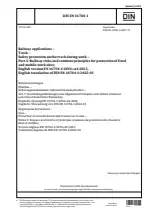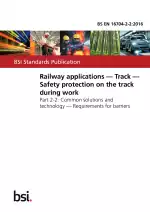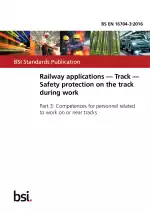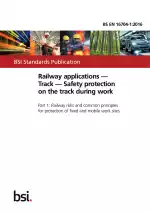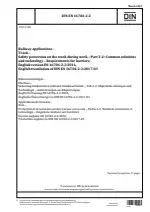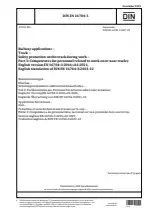Railway Applications - Track - Safety Protection on the Track During Work - Part 1: Railway Risks and Common Principles for Protection of Fixed and Mobile Work Sites
Also Known As:
DIN EN 16704-1 is a European Standard that focuses on the safety protection of railway tracks during work activities. Its purpose is to address the specific risks associated with railway operations and provide common principles for the protection of fixed and mobile work sites.
The standard applies to all work activities related to rail guided systems, excluding infrastructure for metro, tram, and light rail systems. It identifies five specific railway risks that need to be considered: personnel being struck by a train or injured due to wind drag from a train on open working track, personnel being struck by a train or injured due to wind drag from a train on adjacent track, personnel being struck by a machine or train on blocked track, machines, material or equipment being struck by a train on the adjacent track, and personnel being electrified or electrocuted by fixed electrical equipment.
DIN EN 16704-1 also includes requirements for the installation of preventive and corrective measures in the planning and adaptation of infrastructure. It allows for the extension of these requirements to third parties if their activities in proximity to the track pose significant risks as described in the standard.
| Descriptors | Building sites, Construction measures, Currents, Definitions, Hazards, Infrastructure, Installations, Measure, Permanent ways, Personnel, Protective measures, Rail safety, Railway applications, Railway construction, Railway track works, Railways, Risk assessment, Safety, Safety requirements, Security measures, Specification (approval), Workplace safety, Pavements (roads), Sheets, Superstructure |
| ICS Codes | 93.100 - Construction of railways |
| Language(s) | English |
| File Size | 9.1 MB |

